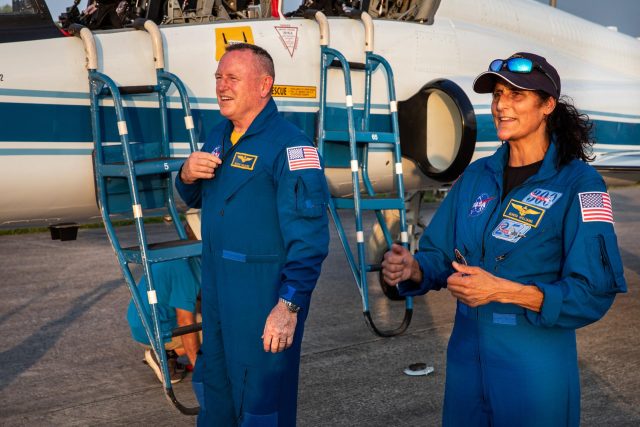
Enlarge / Boeing’s Starliner spacecraft sits on top of a United Launch Alliance Atlas V rocket at Cape Canaveral Space Force Station, Florida.
NASA and Boeing officials are ready for a second attempt to launch the first crew test flight on the Starliner spacecraft Saturday from Cape Canaveral Space Force Station, Florida.
Liftoff of Boeing’s Starliner capsuled atop a United Launch Alliance Atlas V rocket is set for 12: 25 pm EDT (16: 25 UTC). NASA commander Butch Wilmore and pilot Suni Williams, both veteran astronauts, will take the Starliner spacecraft on its first trip into low-Earth orbit with a crew on board.
You can watch NASA TV’s live coverage of the countdown and launch below.
The first crew flight on a new spacecraft is not an everyday event. Starliner is the sixth orbital-class crew spacecraft in the history of the US space program, following Mercury, Gemini, Apollo, the space shuttle, and SpaceX’s Crew Dragon. NASA signed a $4.2 billion contract with Boeing in 2014 to develop Starliner, but the project is running years behind schedule and has cost Boeing nearly $1.5 billion in cost overruns. SpaceX, meanwhile, won a contract at the same time as Boeing and started launching astronauts on the Crew Dragon four years ago this week.
Now, it is finally Starliner’s turn. A successful crew test flight would set the stage for six operational Starliner flights to ferry astronauts to and from the International Space Station (ISS).
Assuming the test flight gets off the ground Saturday, the spacecraft is due for docking at the ISS at 1: 50 pm EDT (17: 50 UTC) Sunday to begin a stay of at least eight days. Once managers are satisfied the mission has achieved all its planned test objectives, and pending good weather conditions in Starliner’s landing zone in the western United States, the spacecraft will depart the station and return to Earth for a parachute-assisted touchdown. If the mission takes off on Saturday, the earliest nominal landing date would be Monday, June 10.
Wilmore and Williams have been here before. On May 6, the astronauts were strapped into their seats inside Starliner’s cockpit awaiting takeoff on a flight to the International Space Station. A valve malfunction on the Atlas V rocket prevented launch that day, and officials subsequently discovered a helium leak on Starliner’s service module that delayed the mission until this weekend.
Flying as-is
After weeks of reviews and analysis, managers determined Starliner is safe to fly as-is with the leak. The spacecraft uses helium gas to pressurize its propulsion system and push hydrazine and nitrogen tetroxide propellants from internal tanks to the capsule’s maneuvering thrusters.
“When we looked at this problem, it didn’t come down to trades,” said Mark Nappi, Boeing’s vice president and program manager for Starliner. “It came down to: Is it safe or not? And it is safe, and that is why we determined that we can fly with what we have.”
Ground teams traced the leak to a flange on one of four doghouse-shaped propulsion pods around the perimeter of the Starliner spacecraft’s service module. In a worst-case scenario, if the condition grew worse during the flight, ground controllers could isolate it by closing the manifold feeding the leak. If the leak doesn’t worsen, engineers are confident they can manage it with no major impacts to the mission.
“We looked really hard at what our options were with this particular flange,” said Steve Stich, manager of NASA’s commercial crew program, which oversees the agency’s contract with Boeing. The flange has a helium conduit and lines for the spacecraft’s toxic fuel and oxidizer, which makes a repair “problematic,” Stich said.

Enlarge / Starliner commander Butch Wilmore and pilot Suni Williams arrived back at NASA’s Kennedy Space Center earlier this week to prepare for launch.
In order to safely fix the leak, which officials believe is likely caused by a defective seal, ground teams would have to disconnect the capsule from the Atlas V rocket, take it back to a hangar, drain its propellant tanks. This would probably push back the long-delayed Starliner test flight until late this year.
But the leak is relatively small and stable. “It’s about a half-pound per day out of 50 pounds of total capability in the tank,” Stich said.
“In our case, we have margin in the helium tank, and we’ve looked really hard to understand that margin and to understand the worst cases, and we took the time to go through that data,” Stich said. “We really think we can manage this leak, both by looking at it before the launch, and then if it got bigger in flight, we could manage it.”